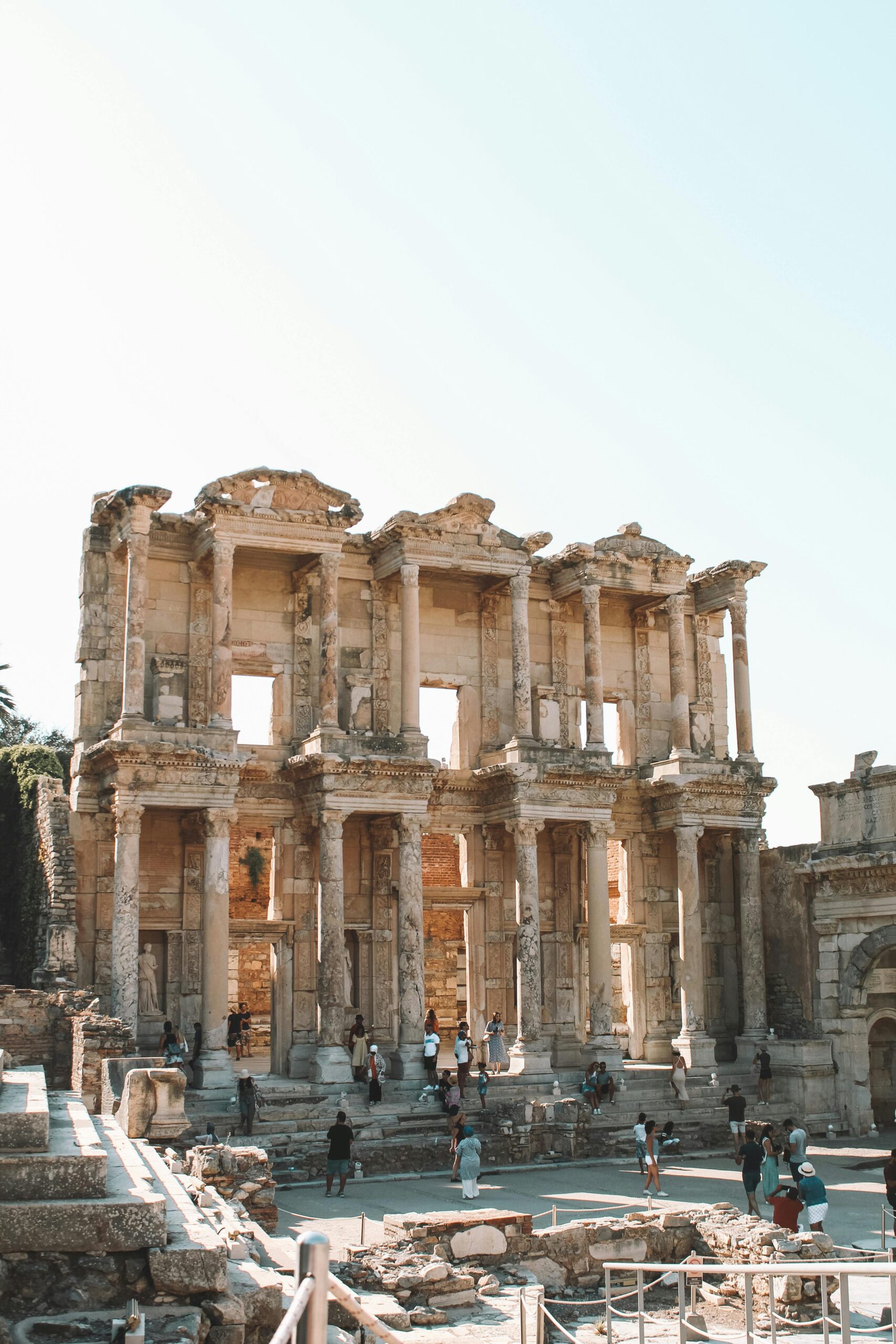![]() A pick up and drop back services by A/ C transportations
A pick up and drop back services by A/ C transportations
![]() Breakfast & Lunch
Breakfast & Lunch
![]() Guide
Guide
![]() Insurance
Insurance
What's included?
What isn't included?
![]() Entrance Fee to the Ancient City of Ephesus
Entrance Fee to the Ancient City of Ephesus
![]() Tips
Tips
![]() Personal charges
Personal charges
What to bring with you?
![]() Comfortable shoes
Comfortable shoes
![]() Hat and shorts
Hat and shorts
![]() Plutocrat for particular charges
Plutocrat for particular charges
Ephesus Ancient City ( Thursday- Sunday)
Departure: 06:00
Return:19:30
The Ancient City of Ephesus started as a simple settlement in 8600 BC. It grew over the centuries and became one of the most important world capitals of its time.
You will travel for 3 hours from Marmaris to Ephesus Ancient City by comfortable buses. Thanks to the fact that the Selçuk district of İzmir, where it was founded, is one of the most fertile lands in Anatolia, trade routes pass through here, and has a port connecting the east and west of the world, the city is very developed. It saw its golden age in 129 BC after it was annexed to the Roman Empire. It became the capital of the Province of Asia. During this period (1st-2nd century BC), Ephesus turned into one of the largest metropolises of its time with a population exceeding 200,000.
The wealth accumulated in the city is also reflected in the architecture. It is possible to guess how impressive the city is from the magnificence of the Celsus Library, which is displayed on its feet again. It is said to compete with Rome.
The most famous structure of the city with its beauty is the Temple of Artemis, which was built by the Lydian king Creseus in 550 BC, before the city was conquered by the Romans and is among the 7 wonders of the world. Unfortunately, only a few pieces of stone and a later joined column remain from the temple today. It is thought that Artemis, a Greek goddess, is the continuation of Cybele, the Anatolian fertility goddess, and was synthesized into Greek culture.
Ephesus was home to people of many religions and races. Relying on the atmosphere of tolerance here, St. Paul brought Mary here to be safe after Jesus’ crucifixion in Jerusalem in approximately 36 AD. Today, the house where the Virgin Mary lives is a pilgrimage site visited by Christians from all over the world.
*Theater Building ( Odeon )
*Bouleterion
*Fountains
*Temples
*Brothel
*Library
*Agoras
*Ancient theater
*Roman Baths
*Gymnasiums
The House of Virgin Mary
The House of Virgin Mary is a Catholic and Muslim sanctuary located in Bülbüldağı, around Ephesus. It is 7 km from Selcuk. The house was discovered following the reported dreams of Anne Catherine Emmerich (1774-1824), a Catholic nun in the 19th century. His visions were collected posthumously in the book of Clemens Brentano. The Catholic Church has not commented on whether the house is really the Virgin Mary, but since the house was discovered, it regularly receives pilgrimages. Anne Catherine Emmerich was anointed by Pope John II on October 3, 2004. Blessed by John Paulus.
Catholic pilgrims visit this house believing that Mary, the mother of Jesus, was brought to this stone house by the Apostle John and lived in this house until she was taken to heaven (Assumption according to Catholic doctrine, Dormition according to Orthodox doctrine).
This holy place has been awarded the visit of various popes and the Blessing of the Patriarchate. Pope XIII’s first pilgrimage was in 1896. It was made by Leo and lastly in 2006 Pope XVI. It was visited by Benedict.
It is thought that Meryem’s grave is also in Bülbüldağı.
There is a small Byzantine church in the ruins of the Virgin Mary, which can be reached by passing the upper gate of the Ephesus Ancient City. It is believed that Mary, the mother of Jesus, lived and died here. It is considered sacred and visited by Muslims as well as Christians, healing is sought for the sick, and offerings are made.
Additional information
| Ticket type | Adult, Child(6-12), infant-0-6 |
|---|
















